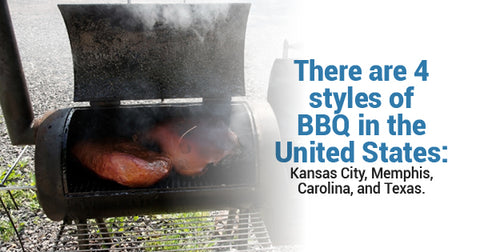Sauces, Spices, and Marinades: A Quick Guide to Flavoring Your BBQ

Meat is wonderful. However, barbecue prepared without any flavor leans less towards wonderful and more towards sad, since it just isn't as delicious as it could be. With at least four American styles of BBQ, including Kansas City, Memphis, Carolina, and Texas barbecue, no meat should go without flavor.
Do your meat justice, and give it the flavor it deserves. Whether you prefer preparing barbecue with stand up smokers, pipe grills, or pit smokers, use this guide to get the flavor just right, every time.
Use Marinades Carefully
Marinades are typically a mixture of spices and vinegar used to soak and flavor raw meat for an extended period of time. Marinades also act as a tenderizer because the vinegar's acids break down tissues in the meat.
Different marinade times are appropriate for different meats. For a softer meat, like fish, filet, or chicken breast, marinate for only about two hours. Tougher cuts of steak and poultry can marinate for four hours or even overnight. To increase flavor, consider basting the meat with the marinade as it cooks. Just remember to never use marinade as a sauce, since it has been contaminated with bacteria from the raw meat.
Practice Your Sauce Timing
When smoking meat, timing sauce application is absolutely essential. Saucing too soon can result in rather unpleasant burnt areas, and saucing too late limits flavor throughout. For chicken, cook until near perfection, then add sauce in the last 10 to 15 minutes of cooking. When preparing BBQ beef or pork butt, sauce much earlier, and cut thin lines in the top of the meat to allow the flavor to seep in. For meats prepared in stand up smokers or other smoking equipment, consider serving sauce on the side instead to highlight the wood flavors.
Pair the Wood with the Seasonings
Finally, when smoking meat, remember that the sauce is not the only source of flavor. The wood you choose will have a significant impact on the flavor of your meal. Try matching the smoke flavor with spice profile of dry rubs, and with the taste that pairs naturally with the meat. For example, strong, bacon-like hickory flavors pair best with savory ribs or pork. Maple pairs better with sweeter sauces and meats, and is the preferred wood for smoking ham.
Choosing the Right Smoker
Of course, the first step to good barbecue is having the best equipment. If you're looking for stand up smokers, custom charcoal grills, or any other high-quality barbecue equipment, contact Lonestar Grillz today.

